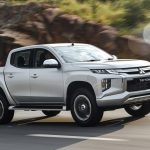Running out of power

As an economist trying to understand and forecast in South Africa, it has proven difficult to remain optimistic in recent times. In fact, many a time the question that must be asked is not if growth will return, but when…
It is with this lens that we entered 2019, expecting a recovery in our growth, but unsure what shocks would be in store. As recent history had taught us, we were expecting something negative, yet the first outcome of the year was to prove many market analysts wrong.
The inflation outlook came out far more favourably than the forecasts for 2019. As such, the interest rate was expected to increase only once up until 2022. Once!
It was surely to be a sign of an economy that finally gave its households and consumers the space needed to breathe, take stock and begin to spend again. The same held for business.
It seemed that the trucking industry had turned a corner, and with good timing. Across each vehicle segment, growth has been more than upbeat – and with the medium commercial vehicle sector finally returning into respectable figures. Beneath the broader sales figures, discussions with industry revealed that demand was starting to pick up momentum as fleet replacement quickened.
The macroeconomic variables support this, too. After having to sweat assets longer, or adopt unconventional methods such as short-term vehicle hire to meet demand without straining capital budgets, operators should breathe a sigh of relief as new activities should propel demand. With inflation accommodative into the next three years, there is also ample opportunity to access favourable financing.
However, unexpected and widespread load shedding of the national electricity grid has cut a gloomy shadow over the economy. The government was forced to scramble to reallocate financing in the Budget speech to prop up Eskom and ensure the lights stay on. What will this mean for the transport industry? Of course, fleets do not directly rely on electricity to run, but the indirect impacts will be felt.
We traditionally measure and forecast vehicle sales by the relationship to broader capital investment. Bouts of load shedding, especially when unexpected, will undoubtedly pull any new investment decisions from the economy, as it shows the economy cannot power an expansion in demand. This will depress demand for new mining facilities (traditionally heavy users of electricity) and production in manufacturing.
The indirect effect of this is that freight demand will be slower for 2019 than many had hoped.
There are solutions for freight operators to consider. Conditions remain favourable for fleet replacement. A stable fuel price not expected to breach US$ 75 per
barrel for the year and inflation remaining within the target band should signal operators to consider financing new fuel-efficient fleets that can handle tighter margins expected if the economic stagnation is to persist for a little longer. The benefit of this is that profitability will be poised to rebound once the elections pass.
Published by
Sam Rolland
focusmagsa




